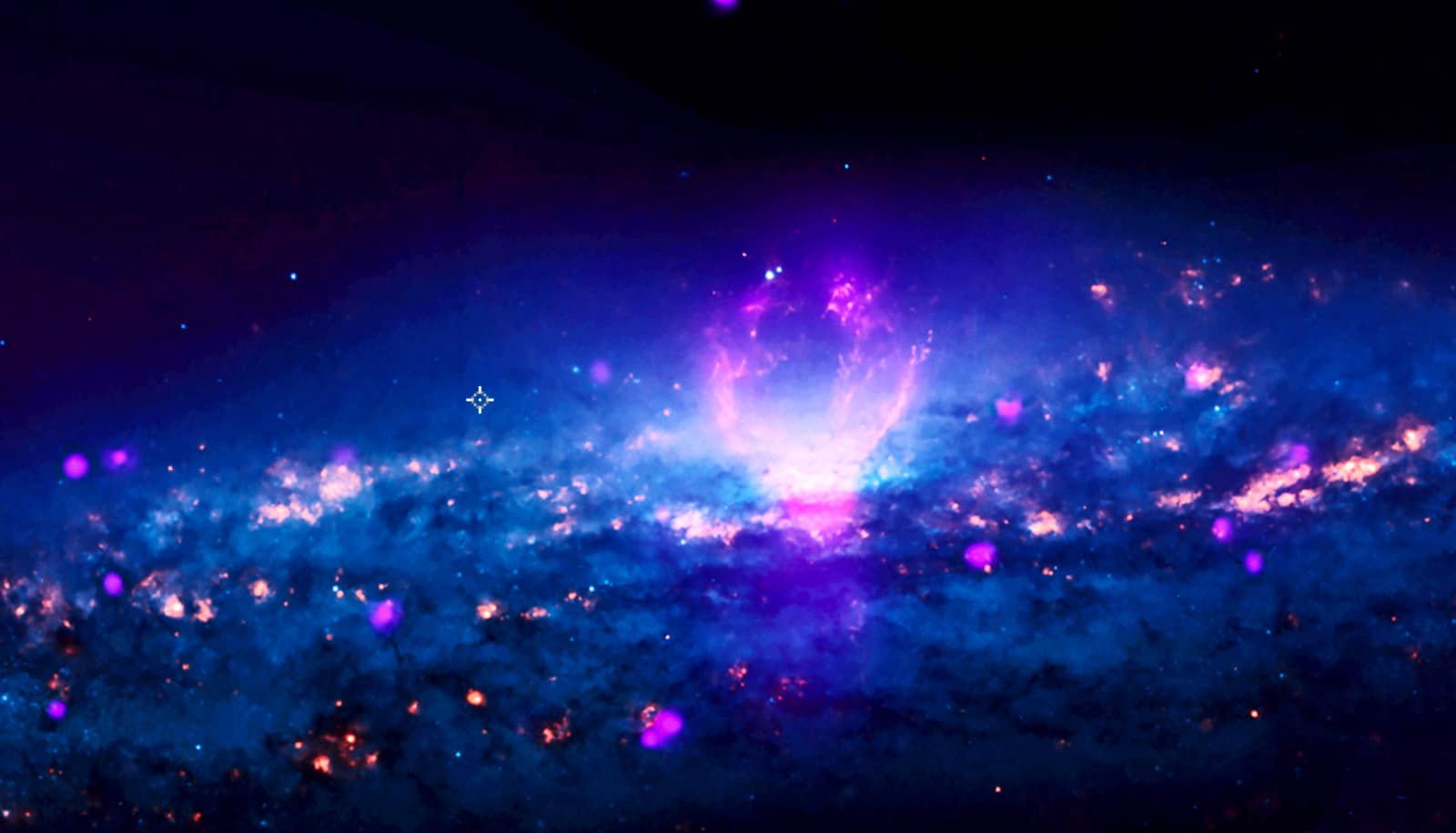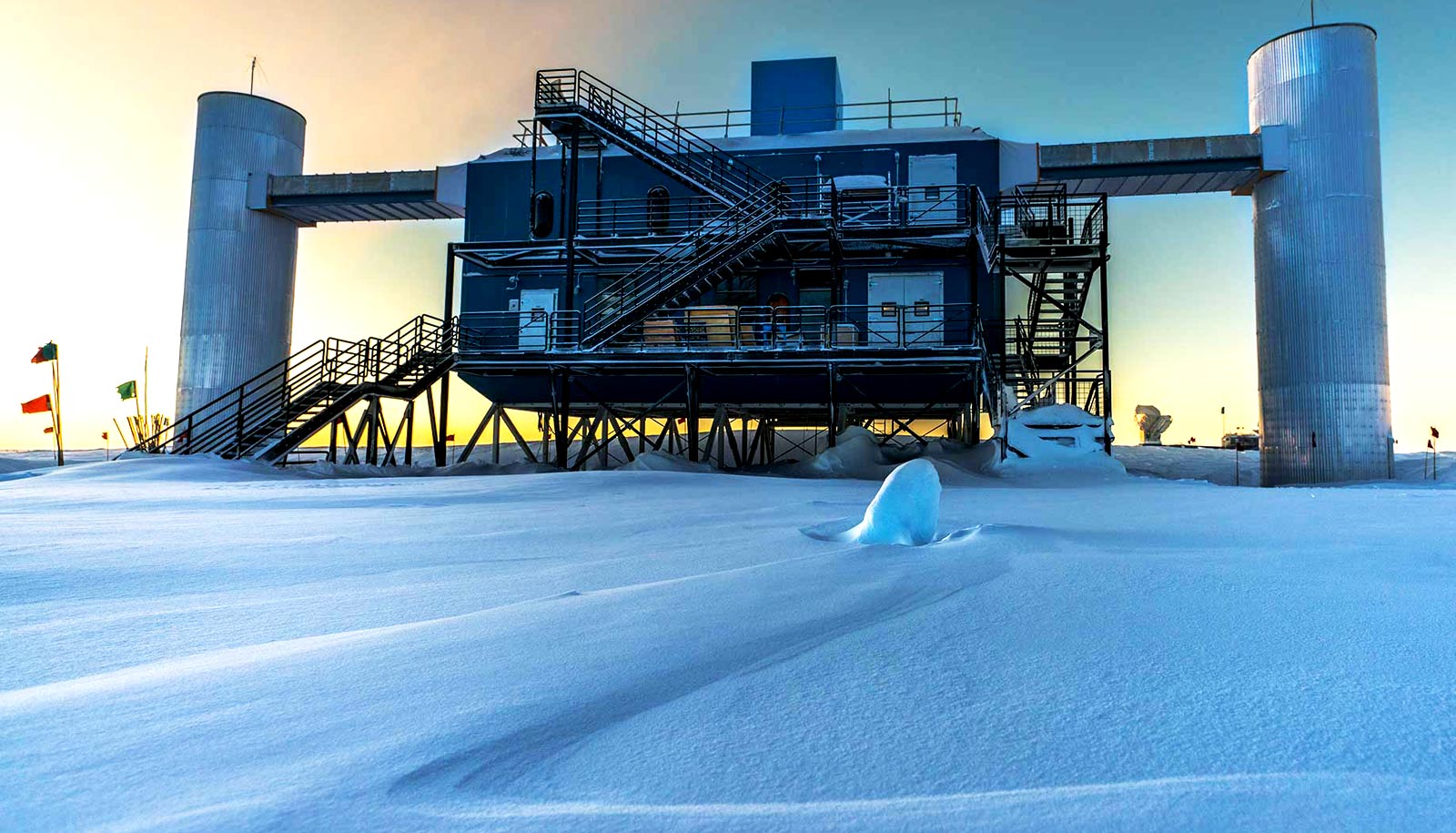New research provides evidence that galactic bubbles may be a source of cosmic rays.
In space, a galactic bubble is composed of a lighter gas trapped inside a heavier one, and these bubbles can be huge.
Galaxy NGC 3079, which is located approximately 67 million light years from Earth, contains two galactic bubbles—one that is 4,900 light years across, and another that is 3,600 light years across. These bubbles give off light in the form of X-ray, optical, and radio emissions, which allow NASA telescopes, such as those at the NASA Chandra X-ray Observatory, to detect them.
New observations from Chandra show that a cosmic particle accelerator is producing ultra-energetic particles on the edges of NGS 3079’s cosmic bubbles, therefore providing evidence cosmic rays come from these bubbles and structures like them.
As the outer regions of galactic bubbles expand and collide with surrounding gas, researchers believe that charged particles scatter and bounce off magnetic fields in the shock waves. When the particles cross the shock front, they are super accelerated to energies about 100 times stronger than those the world’s most powerful human-made particle accelerator generates. Some of these energy particles may escape and even strike Earth’s atmosphere in the form of cosmic rays.
The amount of radio waves one of the galactic bubbles generates suggests that the source of the X-ray emission is electrons swirling around the magnetic fields of the shock waves on the rim of the bubble. A process called synchrotron radiation radiates the electrons. The researchers’ observations present the first direct evidence of synchrotron radiation in high energy X-rays from a massive galactic bubble.
The researchers detected the radio emission on both sides of the bubble, but detected the hard X-ray emission only on the southwest side.
It is strange that the northeast side, which is brighter in every other wavelength (radio, h-alpha, soft X-ray), is not detected in hard X-ray, says Jiangtao Li, assistant research scientist in the astronomy department at the University of Michigan. It is not yet understood why the researchers have not detected synchrotron emission from the other bubble.
The new research appears in the Astrophysical Journal.
Source: University of Michigan



